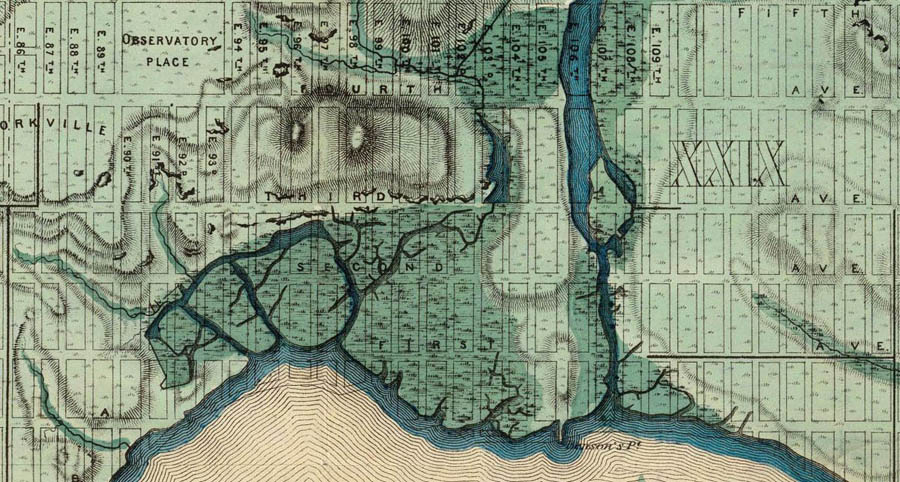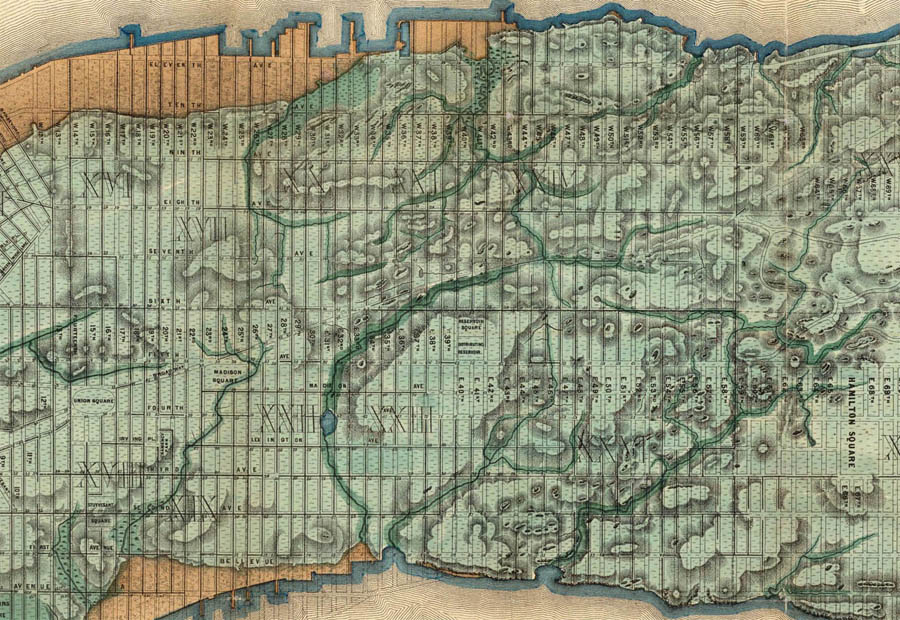 [Image: The Viele Map via Kottke.org].
[Image: The Viele Map via Kottke.org].Because of a talk I'll be giving tonight at the USC School of Architecture in LA with Nicola Twilley of Edible Geography, I found myself re-reading an old post here about fishing in the basements of Manhattan.
 [Image: The Viele Map via Kottke.org].
[Image: The Viele Map via Kottke.org].Manhattan being an island once thoroughly criss-crossed by ponds and streams, almost all of which have been sealed in concrete and turned into sewers, this somewhat hallucinatory theory goes that some of those streams might still be accessible: just smash down through your building's basement floor, uncover the island's lost hydrology of well-braided rivers and streams, and an angling paradise will be accessible at your feet.
 [Image: The Viele Map via Kottke.org].
[Image: The Viele Map via Kottke.org].But what really caught my eye, and what I'm actually posting about here, is a "gutterspace" reclamation project inaugurated by a man named Jack Gasnick, something I rediscovered today after following a link at the end of that post, which leads to the long-defunct blog Urbablurb by Giles Anthony.
 [Image: From Gordon Matta-Clark's Fake Estates, via Free Association Design].
[Image: From Gordon Matta-Clark's Fake Estates, via Free Association Design].This is how Anthony describes Gasnick's project:
- In the early 1970s—unbelievably, given how influential Gordon Matta-Clark has become in the last few years—Gasnick began buying and collecting "gutterspace," or small slivers of land left over from zoning or surveying errors. He said that after a little while he couldn't stop: "It's like collecting stamps; once you've got the fever, you've got the fever."
He "lost track" of them! The mind reels at the possibility that there is still a distributed Jack Gasnick estate somewhere, peppering the streets and gutters of New York City.
As Anthony suggests, this all has an uncanny parallel in Gordon Matta-Clark's Fake Estates project. From Cabinet magazine:
- In the early 1970s, Matta-Clark discovered that the City of New York periodically auctioned off “gutterspace”—unusably small slivers of land sliced from the city grid through anomalies in surveying, zoning, and public-works expansion. He purchased fifteen of these lots, fourteen in Queens and one in Staten Island. Over the next years, he collected the maps, deeds, and other bureaucratic documentation attached to the slivers; photographed, spoke, and wrote about them; and considered using them as sites for his unique brand of “anarchitectural” intervention into urban space.
(The BLDGBLOG/Edible Geography presentation tonight at USC is at 6pm in Harris Hall; it's free and open to the public. We'll be talking about buried rivers, artificial glaciers, and quarantine, among other shared topics of interest).
Không có nhận xét nào:
Đăng nhận xét